#Fraser Report
Text
Panel Told Seoul Used Followers Of Sun Myung Moon for Protests (1978)
WASHINGTON, June 6 (AP) — House investigators today quoted United States intelligence reports as saying that the South Korean intelligence agency had used the Rev. Sun Myung Moon's followers for demonstrations in this country.
“On at least one occasion Moon received Korean Central Intelligence Agency funds for that purpose,” said a summary of the intelligence reports that was read at a House hearing.
Representative Donald M. Fraser, Democrat of Minnesota, said after the hearing that Mr. Moon left the United States for London shortly before the House international relations subcommit tee tried to subpoena him to testify.
Mr. Fraser, chairman of the subcommittee, said he could not be sure whether Ithe South Korean evangelist was evading the subpoena, which called on him to testify next Tuesday.
A former agent of the Korean intelligence agency testified at the hearing that another agent told him the agency had truckloads of Moon followers brought to Washington for a demonstration in September 1974, but then called it off.
Kim Sang Keun, who defected from the Korean agency, testified that he saw an order from Seoul to stage the demonstration. But he said he did not know if Moon followers had been recruited for it.
At that point Mr. Fraser read a portion of the summary quoting American intelligence reports as saying the chief South Korean intelligence agent in Washington had “arranged with Rev. Moon's group for demonstrations” on Sept. 14, 1974.
Mr. Fraser said the demonstrations were to be against Japan's alleged lack of cooperation in investigating the Korean‐Japanese assassin of the wife of South Korean President Park Chung Hee.
The demonstration was called off, Mr. Fraser said, after the State Department learned of the plans and told the Korean government to call off the protest.
Previously, “the K.C.I.A. had used Moon and members of his Unification Church to stage rallies in the United States in support of Korean government policies and aims,” the summary said. “And on at least one occasion Moon received K.C.I.A. funds for that purpose.”
At a news conference after the hearing, Mr. Fraser said Mr. Moon's lawyers knew before the evangelist left New York City on May 13 that the subcommittee had authorized a subpoena for his testimony. But Mr. Fraser said he cannot be certain that Mr. Moon himself knew, adding that the lawyers now refuse even to confirm State Department information that Mr. Moon is in London.
Later, a spokesman for Mr. Moon's Unification Church denied that the evangelist was trying to avoid an appearance before the subcommittee. The spokesman said Mr. Moon had flown to England as part of a tour of Europe.
Related links below
The MacNeil/Lehrer Report: Korean Intelligence and Lobbying Scandal (1977)
Neil Salonen - KCIA Agents Becoming UC Members is Not Aboveboard!
Neil Salonen should stand trial for committing perjury based on new evidence!
Sun Myung Moon Was Building the Kingdom with M-16 Machine Guns
Who was Robert Amory Jr., the Moon Network Lawyer that was also the Deputy Director of the CIA?
On Moon’s Political Network and their Deep Connections to Global Terrorism
Thoughts on South Korea (R.O.K.) - United States (U.S.) Relations
The Unification Church and KCIA: Some Notes on Bud Han, Steve Kim, and Bo Hi Pak
On Young Oon Kim’s Relationship to Butterwick
Rev. Moon Aide Concedes KCIA Sent Him $3,000 (1978)
Programmed to Chill - Bonus Episode 07 - the Korean War, Biological Warfare, COMINT, and MKULTRA, feat. Jeff Kaye - podcast
#Kim Sang Keun#sang keun kim#intelligence agencies#kcia#fraser report#fraser committee#counterinsurgency#anti-communism#sun myung moon#protest#koreagate#politics#right-wing politics#south korea#republic of korea#united states of america#japan#park chung hee#unification church in the united states of america#unification church in usa#unification church in the united states#u.s. politics
0 notes
Text
Fraser Report: Conclusions and Recommendations
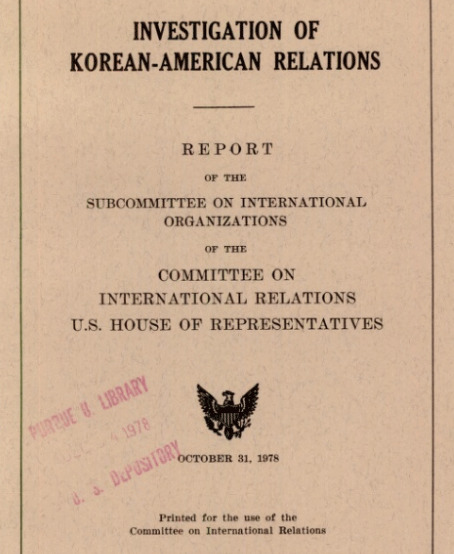
Although this report was published in 1978, it was remarkably prescient. Moon’s goals have been confirmed, in the decades since this report, in many published investigations. Moon was a strong supporter of the Religious Right. The fruits of his cash investments are clear to see in the present US.
INVESTIGATION OF KOREAN-AMERICAN RELATIONS
Report of the Subcommittee on International Organizations of the Committee on International Relations (1978)
United States House of Representatives
Conclusions and Recommendations
Also known as the Fraser Report after the Subcommittee's chairman, Donald M. Fraser.
Printed October 31, 1978, (excerpt from Part C: Investigative Findings, pp. 387-392).
The subcommittee findings regarding the Moon Organization may be summarized as follows:
(1) The UC and numerous other religious and secular organizations headed by Sun Myung Moon constitute essentially one international organization. This organization depends heavily upon the interchangeability of its components and upon its ability to move personnel and financial assets freely across international boundaries and between businesses and nonprofit organizations.
(2) The Moon Organization attempts to achieve goals outlined by Sun Myung Moon, who has substantial control over the economic, political, and spiritual activities undertaken by the organization in pursuit of those goals.
(3) Among the goals of the Moon Organization is the establishment of a worldwide government in which the separation of church and state would be abolished and which would be governed by Moon and his followers.
(4) In pursuit of this and other goals, the Moon Organization has attempted, with varying degrees of success, to gain control over or establish business and other secular institutions in the United States and elsewhere, and has engaged in political activities in the United States. Some of these activities were undertaken to benefit the ROK Government or otherwise to influence U.S. foreign policy.
(5) While pursuing its own goals, the Moon Organization promoted the interests of the ROK Government, and at times did so in cooperation with, or at the direction of, ROK agencies and officials. The Moon Organization maintained mutually beneficial ties with a number of Korean officials.
(6) The Moon Organization established the KCFF ostensibly as a non-profit foundation to promote Korean-American relations, but used the KCFF to promote its own political and economic interests and those of the ROK Government.
(7) The Moon Organization extensively used the names of Senators, Congressmen, U.S. Presidents, and other prominent Americans to raise funds and to create political influence for itself and the ROK Government.
(8) A Moon Organization business is an important defense contractor in Korea. It is involved in the production of M-16 rifles, antiaircraft guns, and other weapons.
(9) Moon Organization agents attempted to obtain permission from an American corporation to export M-16’s manufactured in Korea. The M-16’s are manufactured under a coproduction agreement approved by the U.S. Government, which puts M-16 production under the exclusive control of the Korean Government. Despite this, Moon Organization representatives appeared -- apparently on behalf of the Korean Government -- to negotiate an extension of the agreement.
(10) The Moon Organization attempted to obtain a controlling interest in the Diplomat National Bank by disguising the source of funds used to purchase stock in the names of UC members.
(12) The Moon Organization used church and other tax-exempt components in support of its political and economic activities.
(13) Although many of the goals and activities of the Moon Organization were legitimate and lawful, there was evidence that it had systematically violated U.S. tax, immigration, banking, currency, and Foreign Agents Registration Act laws, as well as State and local laws related to charity fund, and that these violations were related to the organization’s overall goals of gaining temporal power.
Despite the Moon Organization’s cooperative relationship with the ROK Government the UC was far less influential as a religious movement in Korea than elsewhere. A large proportion of the hundreds of Koreans interviewed in the course of the investigation said that they had never heard of Moon or the UC until the early or mid-1970’s, when their activities became widely publicized. In the United States, the UC appears to have had little success in attracting followers from the Korean community. Most Korean-Americans interviewed expressed varying degrees of embarrassment or hostility toward Moon and the UC; few saw them as a positive factor in Korean-American relations.
The subcommittee found that the Moon Organization has had a number of influential allies in the Korean Government, including Kim Jong Pil, Pak Chon Kyu, and others.
Although investigations and publicity in the 1976-78 period appear to have had an effect on the degree of influence Moon’s supporters had with the Korean Government, there were continuing indications that the Moon Organization retained significant support.
Many of the activities of the Moon Organization would not raise questions of impropriety if carried out openly and without violations of laws. The subcommittee does not fault the many Americans, Koreans, and others who identified themselves with Moon Organization-sponsored activities such as the Little Angels, or who shared the Moon Organization’s expressed concerns about communism and South Korean security.
However, the Moon Organization’s ulterior motives behind even its most benign activities tended to negate its positive contributions. For example, the Little Angels, a highly accomplished children’s dance group, undoubtedly improved the image of Koreans around the world and in particular contributed to the Americans’ understanding of Korean culture. The Korean Government’s decision to bar the Little Angels from traveling outside Korea was a loss for Korean-American relations. The demise of the little Angels as a touring group followed growing public awareness of its ties to Moon, who -- after founding and quietly backing the group -- increasingly used it to further his political and economic goals. In his own speeches to followers, Moon made it clear that the Little Angels, the annual science conference, and other seemingly philanthropic projects were in reality geared toward his ambitious and carefully thought plans for winning control and influence over political and other secular institutions.
Moon, like Tongsun Park, showed a keen understanding of the use of imagery in building political influence. Just as Tongsun Park used his close relationship with a few Congressmen to attract others, Moon used the names and pictures of prominent Americans, Japanese, Koreans, and others to create an image of power and respectability for himself and his movement. The multifaceted Moon Organization thereby obtained the help and cooperation of numerous Americans who had no idea they were contributing to Moon’s plan for world theocracy.
Like Tongsun Park and others who conducted pro-ROK influence activities in the United States, Moon and his organization acted from a mixture of motives and objectives. Service to Korea was combined with a desire to advance personal and organizational goals. Like Tongsun Park and others, Moon and his organization attempted to gain influence in Seoul through activities in the United States; to this end, the Moon Organization exaggerated its success in the United States to create influence in Korea and elsewhere. Thus, although the Moon Organization often acted for the ROK Government -- even to the point of accepting money for its services -- control and influence over Korean political institutions was no less a goal there than in the United States. In this respect, the Moon Organization was not an agent of influence for the ROK Government so much as it was a volatile factor in Korean-American relations, capable of distorting the perceptions each country held of the other.
In the United States, for example, Moon has aroused widespread antipathy. To the extent that his organization’s activities here are associated with Korea or the Korean Government, there is potential harm to Korean-American relations. Recent attempts by the ROK Government to dissociate itself from Moon seemed to recognize this problem. However, these attempts at dissociation came only in the context of a public controversy over Moon, investigations into Korean influence activities, and strained relations between the two countries.
The misuse of the names of prominent Americans by the KCFF was of concern to U.S. Government agencies as early as 1966. Much of the executive branch’s early awareness of Korean influence activities in the United Sates -- including those of Tongsun Park -- arose from State Department and congressional inquiries into KCFF publicity and fundraising activities. However, these activities were not then perceived to be linked to Moon. Later, when Moon’s activities generated publicity in the United Sates, there were numerous requests to the executive branch, as well as to the Congress and to State and local authorities, for information about Moon and for investigations of his organization’s activities. The response to these inquiries was fragment. Numerous investigations were launched by agencies such as the NEC, INS, and Department of Justice which involved one or another component of the Moon Organization. The subcommittee’s investigation led it to conclude that these investigations were justified and should continue. However, the subcommittee believes that these investigations will be inconclusive and redundant unless they are coordinated with each other and treated as an investigation of essentially one organization.
The subcommittee concludes that the following objective could be met by combining investigative activities related to the Moon Organization into an interagency task force:
(1) Consideration could be given as to whether apparently unrelated immigration, FARA, currency, banking, and other violations were in furtherance of a common scheme or plan.
(2) All existing information bearing upon the same subjects could be brought together and analyzed; earlier investigations which failed to do this allowed improper influence activities to continue until they caused a major public scandal affecting Korean-American relations.
(3) Maximum resources could be employed toward tracing cash and obtaining evidence from outside the United States.
(4) Tax money could be saved by combining related investigations and eliminating duplication of effort.
Executive Branch Task Force
(1) The Department of Justice, the SEC, the IRS, and other executive branch agencies currently investigation allegations relating to Sun Myung Moon, Pak Bo Hi, the UC, the KCFF, and other individuals and organizations comprising the Moon Organization (as described in this report) should coordinate their efforts and form an interagency task force.
(2) In addition to continuing present investigations, the task force should address itself to the following issues:
(a) Whether there have been systemic and planned violations of U.S. immigration laws and regulations in connection with the importation of large numbers of foreign nationals for purposes of fundraising, political activities, and employment in the Moon Organization business enterprises.
(b) Whether there have been systematic and planned violations of U.S. currency and foreign exchange laws in connection with the movement of millions of dollars of cash and other financial assets into and out of the United States without complying with appropriate reporting requirements.
(c) Whether U.S. tax laws have been violated through large cash transfers to individuals which were characterized as loans.
(d) Whether tax-exempt organizations such as the Unification Church, Freedom Leadership Foundation, Korean Cultural and Freedom Foundation, and International Cultural Foundation, have engaged in political, business, and other activities inconsistent with their tax-exempt status; and whether these organizations are so closely affiliated with each other and with non-tax-exempt business and organizations so as to render them ineligible for tax-exempt status.
(e) Whether there have been systemic violations of the Foreign Agents Registration Act by the Moon Organization.
(f) Whether there have been violations of currency, immigration, banking and tax laws in connection with Moon Organization investments in the Diplomat National Bank and other businesses in the United States.
(g) Whether there have been instances of charity fraud, violations of currency and immigration laws, and abuse of tax-exempt status in connection with the Moon Organization’s control over the Korean Cultural and Freedom Foundation.
(h) Whether there have been attempts to violate, or violations of, the Arms Export Control Act in connection with the manufacture, sale, or attempted sale of M-16 rifles or other armaments by agents of the Moon Organization.
(3) The task force should use the resources of the following agencies: Department of Justice (including the FBI, Anti-Trust Division, and INS); Department of Treasure; Securities and Exchange Commission; Federal Reserve Board; Internal Revenue Service; and Department of State.
(4) The Department of State should assist the task force in attempting to obtain witnesses, financial data, and other cooperation from foreign governments, particularly Japan and South Korea.
(5) The task force should seen information from appropriate State and local governments and should make information available to State and local governments for use in appropriate proceedings involving enforcement of their laws.
The subcommittee also recommends that appropriate committees of the Congress review certain information pertaining to the Moon Organization. Current U.S. tax laws and regulations made it impractical for the subcommittee to examine the tax returns of such Moon Organization components as the Unification Church International, which was denied tax-exempt status by the IRS. However, there is reason to believe that taxable Moon Organization components derive tax advantages from transfers to tax-exempt components. Since both taxable and tax-exempt organizations are used interchangeably in the Moon Organization, such tax advantages would enable the Moon Organization to pyramid economic power and achieve a substantial advantage over competing organizations. The subcommittee therefore suggests a review by the House Ways and Means Committee and the Senate Finance Committee -- which have access to tax returns -- to determine whether transfers of funds within the Moon Organization raise issues which point to the need for legislation to prevent the abuse of tax-exempt status. More specifically, the subcommittee recommends that the House Ways and Means Committee and the Senate Finance Committee review the applications for tax-exempt status (where applicable) and the tax returns of Moon Organization entities, including: Unification Church; Freedom Leadership Foundation; Unification Church International; International Cultural Foundation; Korean Cultural and Freedom Foundation; Tong-Il Enterprises; One-Way Productions; International Oceanic Enterprises; and News World Communications.
and determine whether:
(a) Income from abroad is properly reported.
(b) Deductions are taken by businesses for charitable contributions to tax-exempt organizations, the actual control of which is in the hands of the same persons and organizations in control of the businesses.
(c) New legislation or regulations are needed to prevent tax avoidance and pyramiding of economic power by means of recycling funds through an international organization, part of which is tax-exempt.
The subcommittee has also referred its findings to the Armed Services and Intelligence Committees of the House and Senate, and to the Munitions Control Board of the State Department, with the suggestion that more precise information be obtained without the Moon Organization’s role as a Korean defense contractor. During the investigation, the subcommittee found it very difficult to obtain reliable information about the extent to which Moon industries were involved in weapons production and sales. The Moon Organization has self-proclaimed goals of controlling political and secular institutions and a strident ideology which envisions the formation of a “Unification Crusade Army.” Moon’s speeches forsee an apocalyptic confrontation involving the united States, Russia, China, Japan, and North and South Korea, in which the Moon Organization would play a key role, Under these circumstances, the subcommittee believes it is in the interest of the United States to know what control Moon and his followers have over instruments of war and to what extent they are in a position to influence Korean defense policies.
Of particular concern is the Moon Organization’s involvement in the production and sale of M-16 rifles and other weapons provided to Korea under U.S. aid programs and subject to the Arms Export Control Act. In late 1977, Moon Organization representatives tried to renegotiate a coproduction agreement between Colt Industries and the ROK Government. The circumstances suggested they were secret envoys of the Korean Government which, under the coproduction agreement, has exclusive control over M-16 production. Although the ROK Government said it wanted to produce 300,000 extra M-16’s because of the need to equip its own forces, Moon Organization tried to get Colt’s agreement to export guns to third countries.
The subcommittee therefore recommends:
That the House International Relations Committee, the House Armed Services Committee, and the corresponding committee of the Senate ascertain whether businesses operated by the Moon Organization are engaging in the production or same of armaments supplied to the ROK Government through U.S. military aid programs, including coproduction agreements. Information about the role played by Moon Organization industries in Korean defense production should be sought from the Appropriate U.S. defense and intelligence agencies.
______________________________________
VIDEO: Drunk on Power: Christian Nationalism’s war on democracy
Rev. Moon’s Rising Political Influence (1989)
Inside Moon’s Washington – Washington Post report (1989)
Moon sought to influence the American political agenda by pouring more than a billion dollars into media.
United States Congressional investigation of Moon’s organization
Gifts of Deceit: Sun Myung Moon and Koreagate – Robert Boettcher
Politics and religion interwoven
The Resurrection of Reverend Sun Myung Moon
1 note
·
View note
Text

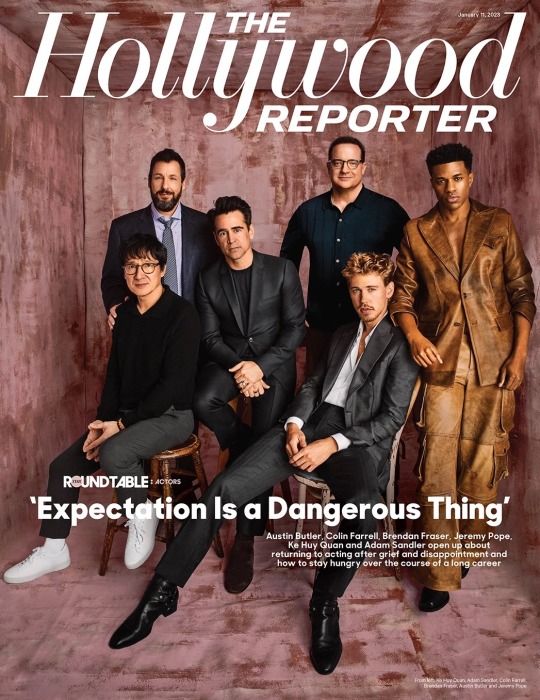
Austin, Colin Farrell, Brendan Fraser, Jeremy Pope, Ke Huy Quan and Adam Sandler for The Hollywood Reporter’s Actor Roundtable.💥
📸 by Danielle Levitt
#austin butler#elvis movie#colin farrell#jeremy pope#brendan fraser#ke huy quan#adam sandler#thr#the hollywood reporter#actors roundtable#january 10
207 notes
·
View notes
Photo
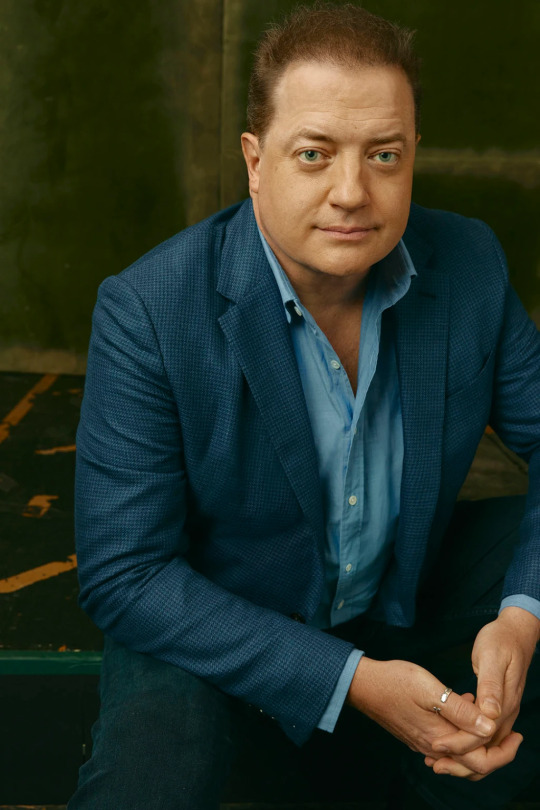
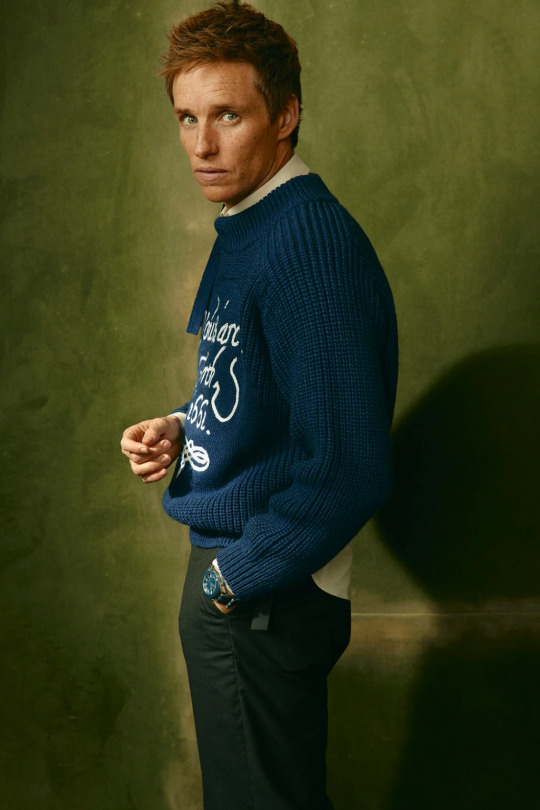
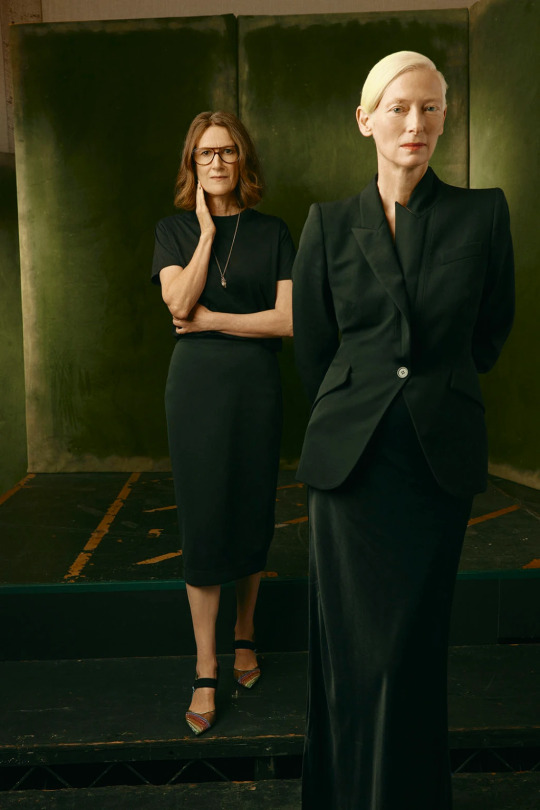
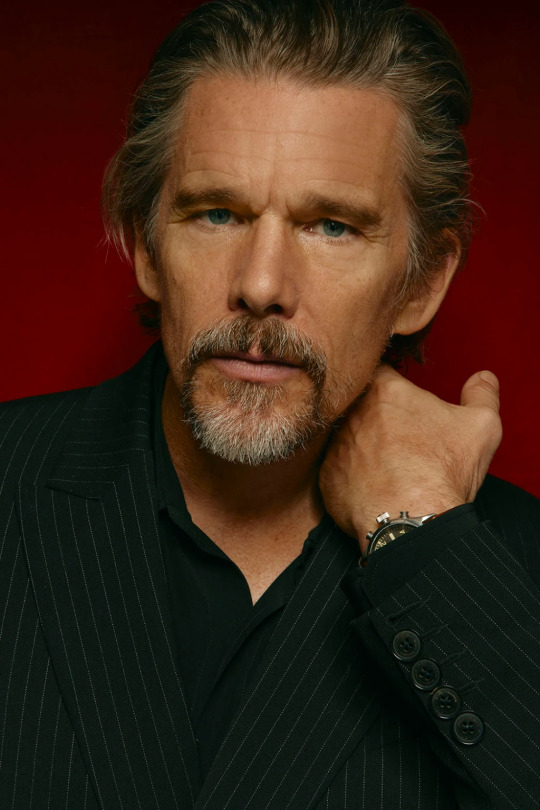
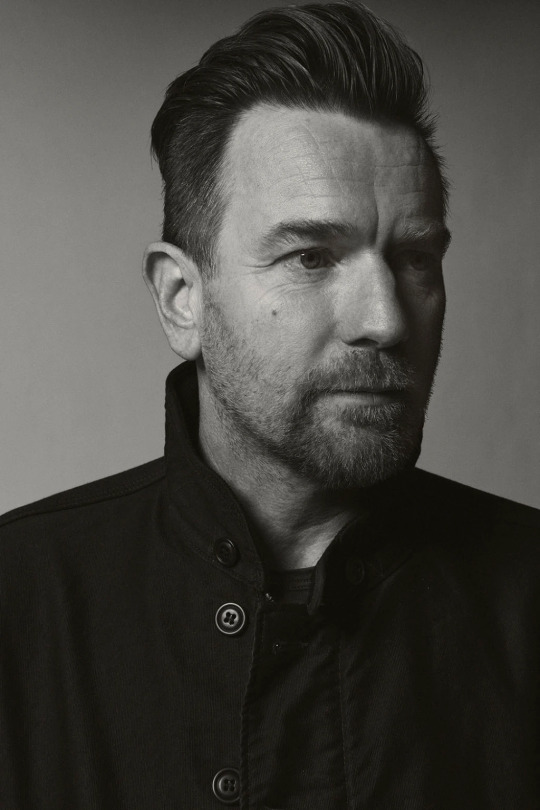

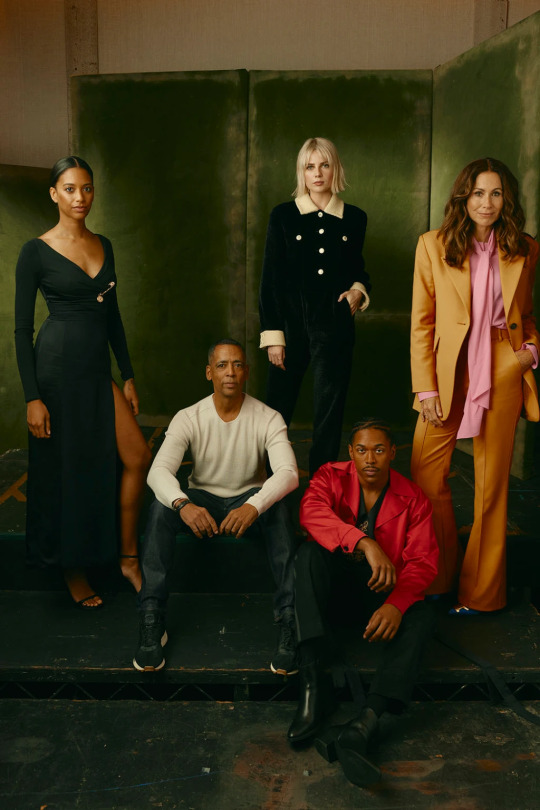
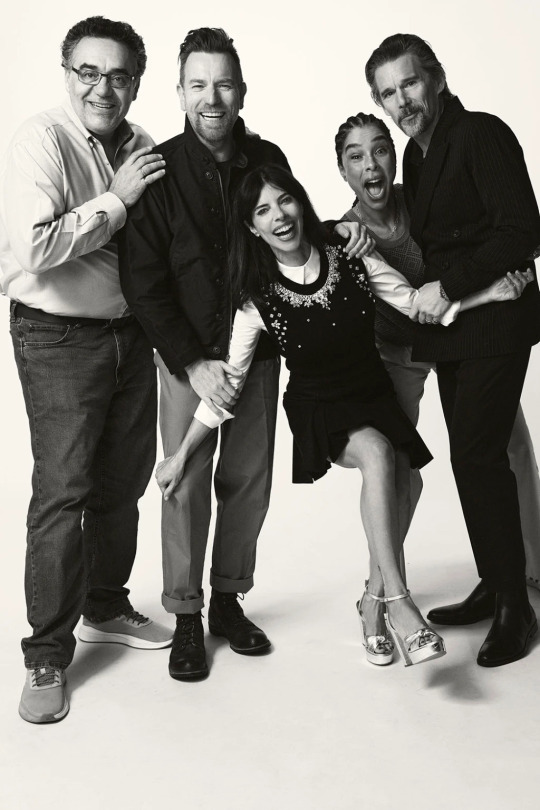
Toronto: Hollywood Reporter's Photo Portfolio
#Toronto: Hollywood Reporter's Photo Portfolio#eddie redmayne#Ethan Hawke#Ewan McGregor#Lucy Boynton#kit harington#tilda swinton#brendan fraser
65 notes
·
View notes
Text
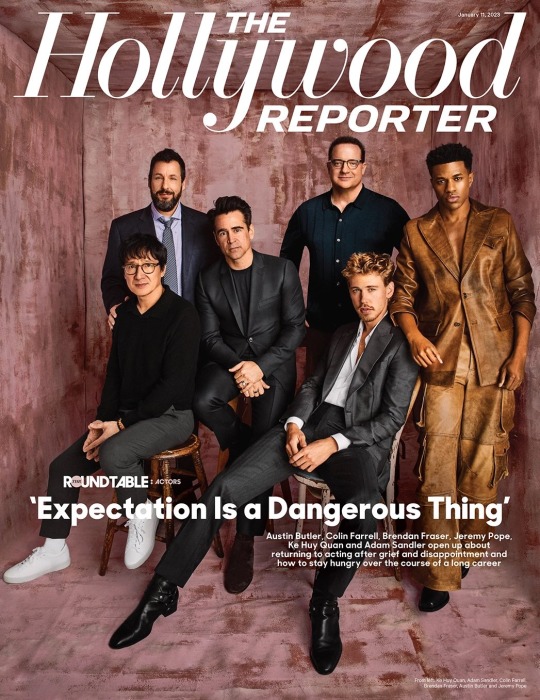
Brendan Fraser, Austin Butler, Colin Farrell, Adam Sandler, Jeremy Pope & KeHuy Quan for The Hollywood Reporter January 2023
#Bredan Fraser Austin Butler Colin Farrell Adam Sandler Jeremy Pope & KeHuy Quan for The Hollywood Reporter January 2023#fashion#style#model#beauty#black model#black fashion#actor#brendan fraser#Austin Butler#colin farrell#jeremy pope#adam sandler#KeHuy Quan#hollywood reporter
10 notes
·
View notes
Text
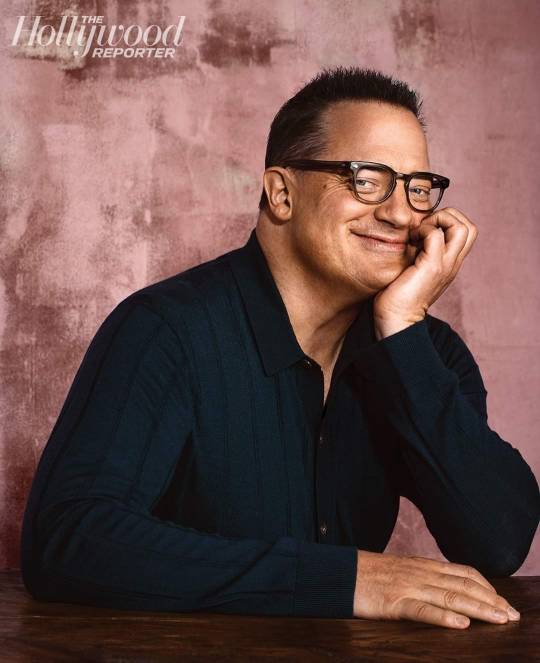
❤️
5 notes
·
View notes
Text
youtube
#i love how these guys all relate to being washed#ke huy quan#colin farrell#brendan fraser#austin butler#adam sandler#jeremy pope#hollywood reporter#actor roundtable
5 notes
·
View notes
Link
[Is Harrison-Hot-Springs-symbolic-motion-of-no-confidence the new Surrey-BC-policing-strategy-decision? I rather think it is. If you read this report and still say that local government politics are dull, then I shall despair of you! But, if you are looking for the plot to your next novel—thinking that it should be an epic tale of feud and betrayal—then I invite you to click through and read the whole thing for inspiration.]
The only thing Harrison Hot Springs’ council seems able to agree upon is the fact that the village is in big trouble.
The last two months have seen allegations of secret meetings, declarations of non-confidence, and—in the midst of it all—a massive pay hike for those involved. Amid all that, top staff have quit, leaving the municipality’s bureaucracy unable to properly function and potentially putting residents at risk.
But council did recently agree on one thing. They unanimously voted to write a letter begging for help from BC’s Inspector of Municipalities, an antiquated office that rarely steps into local government disputes.
#Chaos#rupture#tension#issues#Harrison Hot Springs#Fraser Valley#British Columbia#Canada#news#via The Cambie Report#world news
0 notes
Text






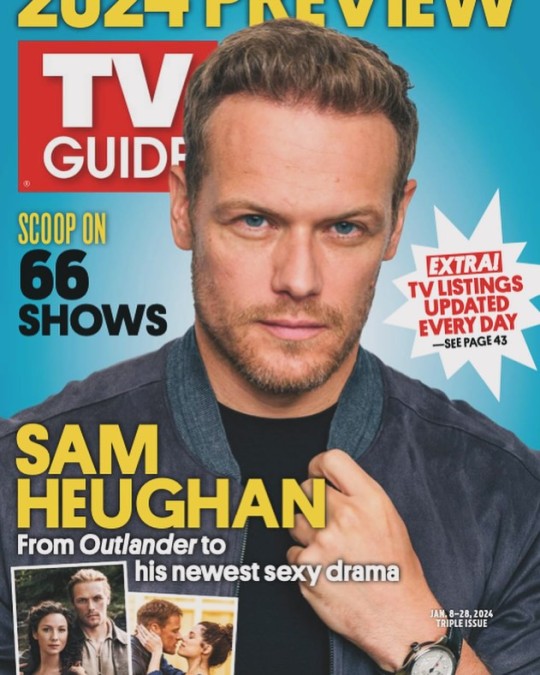




Happy Birthday Sam Roland Heughan, born 30th April 1980 in Balmaclellan, Dumfries and Galloway.
Sam got his name from the Lord of the Rings character Samwise Gamgee. his parents were big fans of the Tolkien books. He attended Kells Primary School in New Galloway before the family moved to Edinburgh when he was 12, he went to James Gillespie’s on the edge of the meadows before finishing his school education at the prestigious Rudolph Steiner School.
After leaving School at 18 Sam worked and travelled before returning to Scotland and enrolling in the Royal Scottish Academy of Music and Drama, graduating in 2003.
Sam built a solid career in theatre in both Scotland and England starring in productions of Plague Over England, Macbeth, The Talented Mr. Ripley, Amphibians, and King John. He has also been featured in notable indie films, Emulsion, and Heart Of Lightness but of course it is one particular role that has catapulted him into worldwide stardom, that of Jamie Fraser in Outlander.
For those who don’t know Outlander it follows the story of Claire Randall, a married combat nurse from 1945 who finds herself hurled back in time to the 1740’s in and around the time when The Jacobites and Bonnie Prince Charlie made the final ill fated attempt to put the Stuarts back on the throne. Sam plays Claire’s “love interest” she is forced to marry. Further series are set in the US in the 1770’s, their remains a strong Scottish presence in the cast, and the show is filmed in studios in Cumbernauld. Sam has won a number of awards for the series.
In the movie To Olivia he played Hollywood star Paul Newman and in the adaptation of the Andy McNab book, SAS: Red Notice, he played SAS soldier Tom Buckingham. Oor birthdat boy also teamed up with fellow Outlander star Graham McTavish Men in Kilts: A Roadtrip with Sam and Graham. The series follows the pair as they explore their homeland delving into the culture and history of Scotland, in a light-hearted way. The second series of the show aired last year, the reviews were mainly positive. The duo are already looking at a third journey, this time to North America but that will likely involve indulging Heughan's thrill-seeking side - much to his friend's dismay
Sam also appeared in the psychological series The Couple Next Door last year, I am yet to catch this, it has average reviews on IMDB of 5.6 out of ten. Born to be Great the story of Alexander The Great's early life has been completed but is yet to recieve a release date.
According to reports Sam celebrated his birthday in Edinburgh at the weekend while also running his My Peak Challenge which included workouts, outdoor activities and a gala night with dinner and dancing. He posted on Instagram describing the event as a 'unique blend of wellness, camaraderie, celebration and more'. The peakers, as they are known has raised millions for charities including Marie Curie.
94 notes
·
View notes
Text
God I feel like the luckiest person in the world sometimes.
My embroidery research led me to this article I mean to write a kind of field notes report on, since it took me months to get my hands on a copy, and it's a really careful and thoughtful examination of how embroiderers thought about and shared new and foreign ideas. It's titled “‘From Scorching Spain and Freezing Muscovy’: English Embroidery and Early Modern Mediterranean Trade,” by Sylvia Houghteling in The Mobility of People and Things in the Early Modern Mediterranean, ed. Elisabeth A. Fraser (London: Routledge, 2020).
It whetted my appetite for more such articles, and Dr Houghteling lists some really cool ones, including:
“Origins in Entanglement: Connections Between English Crewel Embroidery and Indian Chintz” in Cloth that Changed the World: The Coloured Cottons of India, ed. Sarah Fee (New Haven: Yale University Press, 2020).
Cloth that Changed the World was actually an exhibit that ran several years at the Royal Ontario Museum, and it sounds like it was really cool. And this book combines photos of the exhibit with modern scholarship, but it is not available in a digital form and I cannot get so much as a printed off copy of a copy through Interlibrary Loan. It costs $50 and that's the end of it until I have an actual research budget. Still, a girl can lust and gripe about the unattainable.
Then this came in the mail today , invoiced to a friend.
🥹🥹🥹

It's a totally amazing book. I love it so much. God, this stuff.
231 notes
·
View notes
Text
JAMMF, 303
James Alexander Malcolm Mackenzie Fraser is today 303. Born to both strife and greatness, on Beltane Day.
Fictional characters never die for good, their energy keeps on lingering somewhere, in a corner of our heart. So, here's a heartfelt Happy Birthday to a formidable character that one day chose to possess Herself's imagination and brought us all together, in this strange digital limbo of sorts.
Despite his rock-solid appearance, JAMMF is a real chameleon. My favorite JAMMF is perhaps the least talked about one. The Diplomat. Of course.
This guy, playing chess at Versailles (in reality, it's Prague, and a sizably different kind of Baroque, but let's not nitpick, here). A wonderful metaphor for what diplomacy was, is and always will be: a sophisticated game of chess.

While in Paris, JAMMF is acting, in plain sight, as a diplomatic agent of sorts on behalf of Bonnie Prince Charlie's embryo of a government in exile. Desperately hoping and fruitlessly waiting for more. And making a very bad, emotional job of it all, when emotions are least needed, despite all those best laid plans. Still, he does exactly what a diplomat posted abroad would do. He meets all the important honchos, he brilliantly entertains all those people at his open table, he mingles with princes and beggars alike and of course, he dutifully reports in writing about all this, back to Scotland.
It is, therefore, a pity and a shame that Herself did not utter a single word, in Dragonfly in Amber, about the real Jacobite meeting place in Paris: Sorbonne's Collegium Scoticum/Scots College, or Collège des Écossais, founded in 1333, by an edict of the Parliament of Paris (what we would call today the local council) and as a belated, yet important consequence of the Auld Alliance treaty between France, Scotland and Norway:
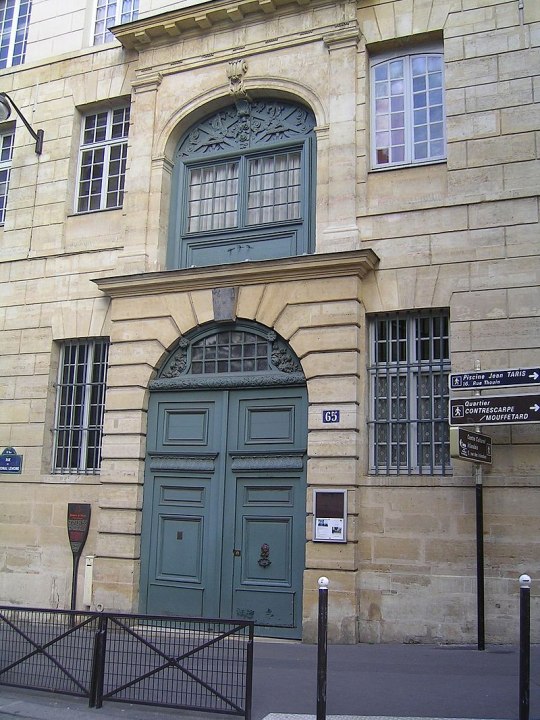
This is a place with a rich and minutely documented history, so much so that the adjoining street soon came to be known as the rue des Ecossais (Scots' Street), instead of rue des Amandiers (Almond Tree Street).
The building is still there, albeit with a different destination, a private Catholic elementary school. And a plaque inside the main building tells part of the story, in Latin:
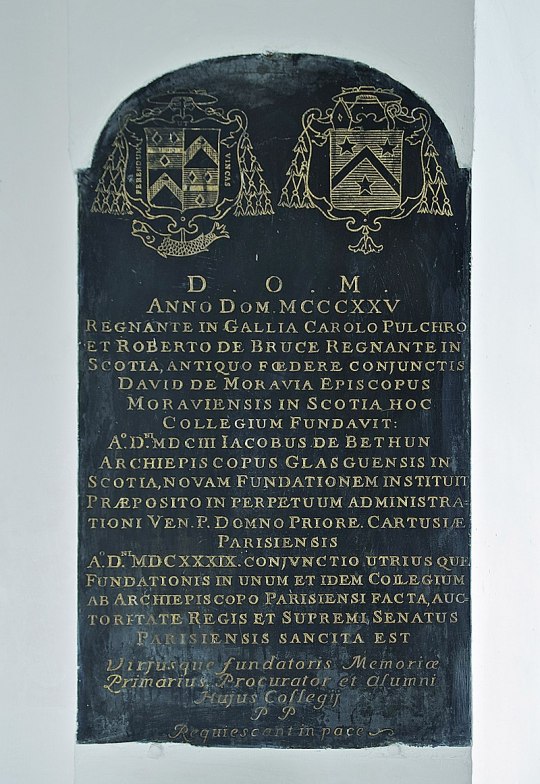
Meaning:
In 1325, under the reigns of Charles the Fair, in France and Robert the Bruce, in Scotland, David de Moravia, bishop of Murray founded this college. In 1604, Jacques de Bethun, archbishop of Glasgow made a seminary out of it, given to the perpetual administration of the Carthusian Order's Superior of Paris [later edit, forgot to translate that properly and the French version I eventually took out is incomplete, sorry!]. In 1639, the whole was placed under the authority of the King of France and the Archbishop of Paris, their supreme authority being solemnly ratified by the Parliament of Paris. In memory of the founders, the priests and the alumni, may they rest in peace!
[Later edit]: the eight year difference in records reflects the time it took for the Parliament of Paris to acknowledge the College's existence and offer its due legal protection. So: founded by the bishop of Murray in 1325 and legally authorized by the Parliament of Paris in 1333. Both dates are legit founding landmarks and can be quoted accordingly.
62 notes
·
View notes
Text
3 Diplomat Bank Directors Favor New Role for Kim (1977)
Source:
https://www.washingtonpost.com/archive/politics/1977/12/23/3-diplomat-bank-directors-favor-new-role-for-kim/c8cb6c0d-530a-47f3-a97e-168e1e14c74f/
By Ronald Kessler
December 23, 1977
Three of the six directors of Diplomat National Bank here are attempting to continue the bank's association with its former chairman, Charles C. Kim, who has been charged by the Securities and Exchange Commission with aiding a secret takeover of the bank by South Korean interests.
Last week, the three directors mailed documents asking stockholders of the bank to elect two new directors who they said would also be favorable to allowing Kim, who now is a consultant to the bank, to perform unspecified functions for the bank.
Kim was barred by a court order in September from performing managerial functions for the bank after the SEC charged that he had fraudulently helped South Korean agent Tongsun Park and an aide to South Korean evangelist Sun Myung Moon secretly obtain more than half of Diplomat National Bank's stock.
The three directors said in their mailing to the bank's stockholders that Kim should be permitted to continue with the bank because he is "important for the economic well-being and continued growth of the bank."
At the same time that the three directors were appealing to the stockholders on Kim's behalf, the bank received a $2 million deposit - equal to about one-fourth of the bank's present total deposits - from Sun Myung Moon's Unification Church. According to one informed source, the three directors supporting Kim have cited this large deposit from the Unification Church as evidence of Kim's effectiveness on behalf of the bank.
Although the court order obtained by the SEC bars Kim from resuming his position as an officer of the bank without approval of the comptroller of the currency or from engaging in other managerial functions, Robert N. Serino, director of enforcement for the comptroller, said it is "possible" Kim could legally solicit deposits or new loan business for the bank.
In addition, Philip N. Smith, the bank's lawyer in proceedings before the SEC, said the order would allow Kim to act as a "marketing consultant."
"We have to determine," Serino said, "if the intent of the order was to keep his (Kim's) influence out of the bank even on a behind-the-scenes basis, and, if so, if these people (the proposed new directors) should be kept out of the bank."
Diplomat was organized in 1975 to cater particularly to Asians living in Washington. In its brief existence, the bank, which has offices at 2033 K. St., NW, has repeatedly figured in newspaper stories and congressional investigations of South Korean influence-buying schemes here. The bank's deposits at the end of last year stood at $7.2 million.
In its complaint, the SEC said Kim and others defrauded those who purchased stock in the bank when it was organized by concealing or misrepresenting its true ownership and failing to disclose the fact that 45 per cent of the bank's demand, or checking account, deposits came from Moon's Unification Church International.
The account, according to the SEC, was maintained by Bo Hi Pak, president of the Korean Cultural and Freedom Foundation and secret purchaser of 43 per cent of the bank's stock.
Pak is interpreter and a top aide to Moon, who is said by the House Subcommittee on International Organizations to have maintained "Operational ties" with the Korean Central Intelligence Agency.
Kim's role at the bank has been the object of a simmering dispute within the board of directors since Kim resigned as chairman under pressure last April. The bank has continued to pay Kim $33,000 a year as a consultant, although the September court order prevents the bank from renewing his consultant contract when it expires in April.
When the bank's current chairman, William Chin-Lee, told Kim to move his offices out of the bank, the three directors who favor Kim - Dr. Magin T. Quiambao, Harry J. Zink, and Dr. Soo Young Oh - wrote to Lee:
". . . it is our belief that Dr. Kim's presence at the bank has a reassuring effect on depositors and therefore is beneficial to the bank. We believe that not permitting Dr. Kim to remain on the premises would run the risk of creating an unsettling effect among the depositors, which might precipitate a run on deposits . . ."
In addressing stockholders, the three directors said in proxy solicitations that they and the proposed new directors intend to allow Kim to "perform such functions for and on behalf of the bank which are not in contravention of the order entered with respect to the bank."
One of the proposed directors, Phillip D. Grub, professor of international business at George Washington University, said he had been asked to serve on the board by Kim, whom, he knew as a student.
"I've seen nothing in his actions to have any qualms about him as chairman of the bank, a position which he had nine months ago," Grub said. However, Grub said he would evaluate facts the board might have before reaching any conclusions on whether to vote to reinstate Kim as chairman.
Grub said he was not aware of the court order preventing such an action without approval of the comptroller. He said Kim told him he was not aware of the secret ownership of the bank.
Describing Kim as a good administrator, Grub said, "Dr. Kim was one of the organizers of the bank. I think it's his baby."
The second candidate, Diosdado Yap, president of Capital Publishers Inc., which publishes congressional directories, said he was never asked if he supported Kim and was surprised when he read in the proxy material that he was a supporter.
"I have no thoughts about Dr. Kim," he said. "As far as I'm concerned, I'll see what is what. If I smell a rat, I have no interest in the matter," Yap said.
One signature on the proxy solicitation appears to be that of Cheyung Choi, named in congressional testimony last October as a supplier of goods to the Korean Central Intelligence Agency.
The former KCIA official who gave the testimony also said he gave Choi $400,000 from Tongsun Park, who is under indictment for his alleged role in the Korean influence-buying scheme.
The proxy material says stockholders should send their votes to Kim, any of the three directors who initiated the proposal or Napoleon Lechoco.
Lechoco is a Filipino lawyer who held that country's ambassador to the United States at gunpoint for 10 hours in the ambassador's office here in 1974. Last May, a jury found Lechoco innocent of kidnaping and other crimes in connection with the incident on grounds of temporary insanity.
Related links below
The MacNeil/Lehrer Report: Korean Intelligence and Lobbying Scandal (1977)
On the KCIA Connection
On Leon Jaworski
Rev. Moon Aide Concedes KCIA Sent Him $3,000 (1978)
House Unit to Query Aides to U.S. in Korea (1977)
Former KCIA Head Says Park Tong Sun was Korean Agent (1977)
President Park Said to Direct Lobbying (1978)
Neil Salonen - KCIA Agents Becoming UC Members is Not Aboveboard!
What the KCIA and the Moonies did to the Editor of the Korea Journal, Song Sun Keun
George Bush, head of CIA, protected Moon
#koreagate#kcia#diplomat national bank#washington d.c.#bo hi pak#sun myung moon#unification church#unification church of the united states of america#unification church of usa#american church#unification church of the united states#u.s.a.#bank#tongsun park#fraser report#fraser committee#Charles C. Kim#charles kim#tong-sun park#tong sun park
0 notes
Link
The assassination of former Prime Minister Abe Shinzō by a second-generation member of the Unification Church claiming that his mother’s donations to the organization destroyed his family has focused attention on the UC’s deep ties with the ruling Liberal Democratic Party, including questions about its political agenda and influence on LDP policy.
“Koreagate”
The current furor over the Unification Church, officially known as the Family Federation for World Peace and Unification, is nothing new. The organization has been dogged by controversy since its inception. As early as the 1960s, the Japanese media took notice of the UC’s activities, particularly the group’s recruitment of university students, leading the Asahi Shimbun to label it in 1967 a “fundamentalist movement that makes parents weep.” In the 1980s, the UC came under fire for so-called spiritual sales in which it conned followers and others of money by persuading them to buy exorbitantly priced goods like seals and urns. The organization drew further public suspicion in the 1990s for squeezing members for huge donations and conducting mass wedding ceremonies, the latter becoming news when a popular Japanese singer took part in the bizarre ritual.
The latest controversy revolves around the UC currying favor with members of the ruling Liberal Democratic Party and other legislators. The organization is no stranger to influence buying, as demonstrated by its involvement in the 1976 US political scandal “Koreagate.” The affair centered on wealthy South Korean businessman Park Tong-sun, who funneled money to various members of the US Congress, but the UC was a core player, a fact that has largely been forgotten.
The events of Koreagate are detailed in a 1978 report by a House International Relations subcommittee chaired by Donald M. Fraser, a Democratic legislator from Minnesota. The report alleges that the Korean Central Intelligence Agency used Park to bribe and influence US representatives in an attempt to reverse President Richard Nixon’s decision to withdraw some US troops from South Korea, a conciliatory gesture made to Beijing after Nixon’s historic visit to China in 1972. The KCIA, a formidable spy agency, was established by Kim Jong-pil, a confidant of President Park Chung-hee who would go on to serve two stints as prime minister.
Fraser in his report noted “active cooperation” between the KCIA and organizations related to Unification Church founder Sun Myung Moon. This was at the height of the Cold War, and the KCIA saw the UC with its firm anticommunist stance as a useful tool in achieving its geopolitical goals.
Around the same time in Japan, the UC founded the International Federation for Victory over Communism and appointed Sasakawa Ryōichi, a prominent right-wing figure and head of the Japan Shipbuilding Industry Foundation (now the Nippon Foundation), as its honorary chairman. Sasakawa had close ties with former Prime Minister Kishi Nobusuke and other members of the conservative wing of the LDP, and it was from this connection that the UC spread its influence throughout the party.
Posing as Religion
Some of the most damning revelations about the UC during the Koreagate investigation came from the testimony of several high-ranking leaders of the church in the United States. The individuals detailed how Moon used the guise of religion to further his economic and political goals through the Moon Organization, a global network of UC affiliated religious and secular groups, businesses, and nonprofit corporations.
Even as evidence of the UC’s dubious activities piled up, the church has been allowed to carry on as it pleased in Japan, largely due to the hesitancy of legislators to take legal actions against rogue organizations out of fear of trampling on the religious liberties of citizens. This has worked to the advantage of the UC, shielding it from government-imposed restrictions and allowing it to further expand the scope of its operations.
Roots of a Cult
The UC’s involvement with the KCIA and rise to international prominence is startling given that Moon started out as the head of a fringe Christian sect known for engaging in strange sexual rituals. Pak Chung-hwa, a former church leader and confidant of Moon, detailed the early years of the sect in his 1993 book Roku Maria no higeki (The Tragedy of the Six Marys), which was first published in Japan. In the work, Pak talks about how Moon used his doctrine of “purifying” the blood of original sin to force female followers to have sex with him.
The idea of original sin, which holds that humans are born into a state of sinfulness as the result of the fall of Adam and Eve, is a tenet of many Christian faiths. However, Moon’s interpretation of Adam and Eve being cast out of the Garden of Eden diverges from the standard Old Testament story, which has the couple eating the forbidden fruit from the tree of knowledge. In his view, original sin is linked to Eve having sex with Lucifer, who appeared to her as a serpent, an act that corrupted her blood and subsequently, through sexual intercourse, that of Adam too.
Moon preached that a messiah would be sent who would establish a sin-free line by purifying the blood of six “Marys,” meaning married women. To fulfill the prophecy, the messiah would need to have sexual intercourse with the women a total of three times each. Presenting himself as the messiah, Moon used his doctrine to cajole female followers to sleep with him, and later bilked them of their money and assets.
Over time, the doctrine of sexual “purification” changed so that rather than intercourse with Moon, followers could be purified of original sin by marrying a spouse chosen for them by the church, giving rise to the mass wedding ceremonies that the UC is known for.
Campus Recruiting
The UC early on saw Japanese universities as rich recruiting grounds and lured candidates to student clubs and study groups run by affiliate organization the Collegiate Association for the Research of Principles. It targeted students at top schools in particular, hoping to place converts from elite colleges like the University of Tokyo and Waseda University in leadership positions within the church.
A person contacted by a CARP representative in 1977 while still in high school describes the group’s tactics: “I was approached outside of Takadanobaba Station and invited to a Bible study group. They took me to the church’s headquarters near Waseda University, where I heard about the doctrine of original sin and Moon as a messiah.”
The UC typically sent young candidates to camps to be indoctrinated into the faith, but the high schooler managed to avoid this fate after becoming skeptical of UC members praying to pictures of the South Korean flag and Moon hanging on the wall of the headquarters. “They claimed he was the patriarch in Korea and that he was more exalted than the Japanese emperor. This was too farfetched to believe.” LINK
Anti-Japanese Sentiment
Moon begrudged Japan for its 1910-45 occupation of the Korean Peninsula. Consequently, UC doctrine takes a harsh view of the country, describing it as the “Eve nation” that defiled the “Adam nation” of Korea. Moon also saw Japan as a rich source of income and advocated that Japanese hand over their assets as reparations.
Moon claimed to have studied engineering at Waseda University in the 1940s, purportedly attending evening classes while working as an electrician during the day. [In his “Autobiography” Moon clarifies that he attended a Technical High School in Tokyo, NOT Waseda University.] At the time, there was widespread discrimination against Korean residents, something that remains an issue today, and many experts suggest that the UC’s anti-Japanese teachings stem from Moon’s experiences, leading him to embrace the view that the nation needed to be punished for its transgressions.
This resentment was expressed in different and often bizarre ways. For instance, an article in a February 1985 edition of the now defunct weekly magazine Asahi Journal describes special ceremonies held at UC facilities in the United States on the four main traditional Korean festivals in which Japanese members of the church leadership dressed up as the Japanese emperor and supplicated themselves before Moon. LINK
It is hard to fathom how the UC maintained such close ties with members of the LDP’s conservative faction despite espousing blatantly anti-Japanese ideas. Similarly, it is difficult to comprehend why the LDP never took issue with the UC using religion as a front for its economic and political ambitions, as Fraser noted in his 1978 report, but instead continued to foster the relationship despite the obvious dangers of doing so. The easiest explanation, of course, is that the LDP and UC mutually benefitted from the arrangement.
Shared Objectives
The UC initially forged a connection with the right-wing elements of the LDP through its shared anticommunist stance. Once a link was established, the organization bolstered its sway by placing followers as secretaries for LDP legislators—a number of these even went on to represent the party in regional assemblies—and using bloc voting to help LDP candidates win election in local contests.
The media and others have suggested that former Prime Minister Abe Shinzō oversaw the LDPs relationship with the UC, using it to remain in power by helping allies in the party win office. Abe’s alleged killer cited this close connection with the UC as a motive for gunning him down in July 2022. The shocking incident quickly laid bare the LDP’s deep ties with the UC, with the issues becoming a huge political liability for the party.
There is growing suspicion that the UC had enough sway with LDP politicians to exert influence over national policy. For instance, Japan remains the only G7 country not to legally recognize same-sex marriage, a stance that puts it painfully out of step with other democratic nations that have embraced marriage equality. Rather than risk being seen as wavering, though, the government has instead doubled down on its policy, as illustrated by Prime Minister Kishida Fumio recently stating that legalizing gay marriage would “change society.”
It is impossible to ignore that this view echoes that of the UC, which has long fought against same-sex marriage and LGBTQ rights. Reports have even emerged that UC-affiliated groups asked LDP members to promise to “take a cautious stance” on the issue amid a larger campaign to persuade legislators to agree to policies embraced by the church. The UC is also suspected of having influenced the LDP’s resistance to allowing married couples to use separate surnames.
Then there is the fact that in 2015 during Abe’s second stint as prime minister, then Minister of Education, Culture, Sports, Science, and Technology Shimomura Hakubun granted the UC’s long-sought request to change its official name to the Family Federation for World Peace and Unification, a controversial move that many see as enabling the church to obscure its previous involvement in controversial activities.
All this gives further credence to the view that the UC used its relationship with the LDP to influence government policy. This should come as no surprise, though, if one considers the findings of the Koreagate scandal, which showed beyond doubt that the UC is more concerned about achieving its geopolitical aims than religious salvation.
(Originally published in Japanese. Reporting and text by Power News.)
_________________________________
United States Congressional investigation of Moon’s organization: Fraser Report
Gifts of Deceit: Sun Myung Moon and Koreagate – Robert Boettcher
How Sun Myung Moon bought protection in Japan
1a. The LDP’s Tangled Ties to the Unification Church (2022)
1b. NNLASS press conference held in Tokyo on FFWPU/UC “spiritual sales” (2022)
2. Richard J. Samuels – Kishi and Corruption: An Anatomy of the 1955 System (2001)
3. John Roberts – Earth-conquering Moonies (1978)
4. Kishi wrote a letter to President Reagan to get Moon sprung from jail. (1984)
The Tragedy of the Six Marys
Note: Sun Myung Moon only attended evening classes at a Technical High School in Tokyo. His claims of attending Wasda University were always a lie which he repeated in his speeches, and which top Korean UC leaders promoted. See:
The Sun Myung Moon church – Jane Day Mook & Hiroshi Yamaguchi
Moon’s theology for his pikareum sex rituals with all the 36 wives
Ritual Sex in the Unification Church – Kirsti L. Nevalainen
Sun Myung Moon: The Emperor of the Universe, transcript and links
1. “Rev Sun Myung Moon: Emperor of the Universe” documentary
.
A BBC / A&E Network co-production, 2000
2. World Domination – Sun Myung Moon died before he could take over a single country.
Sun Myung Moon and the United Nations
The Resurrection of Reverend Sun Myung Moon
Human trafficking in the UC/FFWPU is despicable
6,500 Japanese women missing from Sun Myung Moon mass weddings
https://六マリアの悲劇.com
#Unholy Alliance#LDP#Unification Church#FFWPU of Japan#Hak Ja Han#Sun Myung Moon#Fraser Report#sex rituals
0 notes
Photo
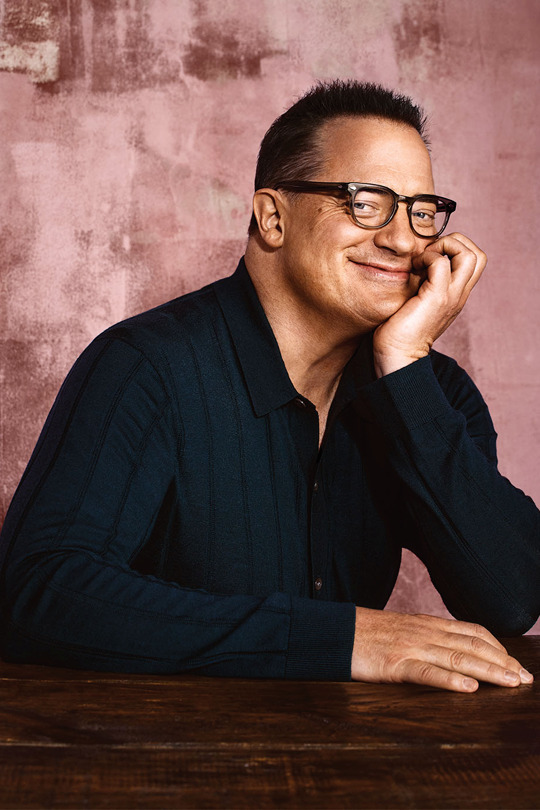
BRENDAN FRASER
The Hollywood Reporter: Actor Roundtable 2022
Portrait by Danielle Levitt
620 notes
·
View notes
Note
hmm i was scrolling through Twitter earlier and as the designated leafs blog in my mind, what are your thoughts on fraser minten? like he’s so interesting to me because in the narrative i’ve created of him he was tavares’ fifth child but then was our balanced by knies being better, but then wjc happened and he still couldn’t crack it. now he’s on the blades (one of the best whl teams i think??) very interesting
NARRATIVELY he's definitely The Tavares Child -- okayyyy so. Sew. this New Generation of leafs (imho starting at Knies and including Easton Cowan as well as minten) kind of... each parallel a member of the Core: Knies is Auston's child (Arizona boy, big strong forward), Cowan is Mitch's child (London Knight, small winger with endless energy) and Minten is JT's child (Captain anywhere he goes, known for maturity and intelligence)... william child + morgan child ->
anyHWAY the real life scouting report under the cut (not too long i don't think)
Minten's a high second-rounder, which is the type of player that's generally designated as an "upper maybe" NHLer -- by which I mean odds-on he'll get NHL games (as Mints has) but it's less likely he'll become a serious full-time player (although many a second-rounder can and does do so!) The most interesting thing about his draft position was that the Leafs, under Kyle Dubas, traded DOWN to get him -- we had a low first-rounder, then traded it to Chicago to get rid of the Mrazek contract and got the pick that would become Mints in return. Many a source says that Kyle wanted Mints anyway and would have taken him with the first-round pick.
The general consensus is that Mints tops out as a middle-six centre, a 3C on a good team or a 2C on a worse one (or a 1C on the Boston Bruins.) His ceiling is probably about 40 or 50 points, maybe more depending on how much power-play usage he gets.
However, it's also noted (and was pretty obvious to me, even watching him at the WJC -- which I'll get to in a second!) that his real value is not and will likely never be in point production. He's a natural centre, good-to-great at faceoffs (a skill that he learned in part from JT!!) and very good defensively. Because he's still a kid, plays a bit physically and tends to be involved in the play at both ends, he probably takes a few too many undisciplined stick infractions, but these things of course can be straightened out with time and wisdom. Also, he's a touch of a personality hire: he was the youngest A on the all-timer Kamloops Blazers last year and was pretty much immediately named C after the Leafs sent him home this year; he was named captain of the CANADIAN WORLD JUNIORS team with zero other experience playing for Canada on the national level. He plays the piano! He's smart, polite, doesn't cause a fuss, wise beyond his years. Takes a guy far.
Anyway, the WJC: just an absolute hackjob by the coach and one of those years that really demonstrates that Hockey Canada still thinks it can get ahead by being Canada (the ol' throw bodies at the wall shtick) and not, like, because of its actual quality of development. I think bowing out when they did was a bit unlucky, but they absolutely were NOT primed to win it all -- especially because the coach basically seemed to have no concept of... line construction? or anything of the sort? Like he just tossed players together from a hat once (1) and decided they were just going to play out the tourney like that -- no real concept of "x is the playmaker, y is the shooter, z is the forechecker" or "these three are the transition line that take d-zone draws and use their speed to create rush chances/o-zone draws" or even something so simple as "this defensively-minded, slower centre is perhaps not the best match for the winger notorious for being opportunistic and shooty." Also, not to put too fine a point on it but a player can have a bad WJC and it doesn't mean anything, or a good WJC and it also doesn't mean anything -- Jesse Puljujarvi rose his draft stock by a good chunk in 2016 by having a FANTASTIC WJC, and he's currently on an AHL tryout. It's a small sample size, mostly played with teammates they barely know and against competition about a half-step up from what they're used to. Weird statlines happen.
Back to MINTS because we're still talking about him. Yess currently he's on the Blades -- traded from the Blazers because the Blazers are garbage and they want to Do Right By The Player and put him on a competitive team (done for two reasons: one, because it can be demoralizing to be the best player on a bad team, and two, because being on a good team in juniors often means you get actually good-for-your-development linemates and usage). He was generally not expected to make the Leafs at ALL this season (I mean, 20-year-old second-rounder, right?) and cracking the roster out of camp, even though he only got three games and has a rather blank statline is SUPER impressive. I'm pretty sure this is his last year of CHL eligibility, after which he'll probably either get put on the Marlies for a year to keep cooking or he'll make the Leafs again and stick around. Either way, he's slid twice I think so we burn a year of his ELC.
and my opinion of the boy? I love him. Let's go baby leafs baby leafs forevar
51 notes
·
View notes
Text
Who is the Hottest Hero in Austen?
Hard to tell, given that Austen hardly describes anyone, but here is my personal rating based on quotes:
1. Edmund Bertram: drop-dead gorgeous. Of all the books, Mansfield Park really seems to dwell on how attractive the Bertrams all are as a family. Edmund’s hotness is so overwhelming that Mary is ashamed of his profession but impressed by his arm-candy qualities (I will take a moment to note that Mary does love Edmund for his integrity, it isn’t only lust on her side)
They were a remarkably fine family, the sons very well-looking… that the Mr. Bertrams were very fine young men, that two such young men were not often seen together even in London…. He will not do by the side of your cousin Edmund… my friends here are very much struck with his gentlemanlike appearance. Mrs. Fraser (no bad judge) declares she knows but three men in town who have so good a person, height, and air...
2. Captain Wentworth: very handsome. I give him extra props because Sir Walter Elliot is one of the most critical people of appearances and he is even impressed. Was he very fastidious in his hat wearing while at sea? Because you would think the harsh conditions would have affected his skin. Good genes I guess.
He was, at that time, a remarkably fine young man... a certain glance of his bright eye, and curl of his handsome mouth… how much handsomer, how infinitely more agreeable they thought him than any individual among their male acquaintance,.... No: the years which had destroyed her youth and bloom had only given him a more glowing, manly, open look, in no respect lessening his personal advantages. She had seen the same Frederick Wentworth….. when he [Sir Walter] saw more of Captain Wentworth, saw him repeatedly by daylight, and eyed him well, he was very much struck by his personal claims, and felt that his superiority of appearance might be not unfairly balanced against her superiority of rank
3. Fitzwilliam Darcy: handsome and tall. We do not get as much time focusing on Darcy’s looks as his wealth. So while I think he is good looking, he doesn’t seem to be quite Edmund or Wentworth level. Important to note: Wickham is almost certainly more physically attractive than Darcy.
Mr. Darcy soon drew the attention of the room by his fine, tall person, handsome features, noble mien… The gentlemen pronounced him to be a fine figure of a man, the ladies declared he was much handsomer than Mr. Bingley, and he was looked at with great admiration for about half the evening… “it is a handsome face”... “I am sure I know none so handsome”... “To be sure, Lizzy,” said her aunt, “he is not so handsome as Wickham; or, rather, he has not Wickham’s countenance, for his features are perfectly good.”... so handsome! so tall!
4. Charles Bingley: secondary to Darcy in hotness and wealth, but that’s okay, because everyone likes him better anyway.
Mr. Bingley was good-looking and gentlemanlike; he had a pleasant countenance, and easy, unaffected manners… He is so excessively handsome!... “He is also handsome… Oh! he is the handsomest young man that ever was seen!
5. Henry Tilney: good looking. He’s no match for his older brother, but he makes up for it by being awesome.
He seemed to be about four or five and twenty, was rather tall, had a pleasing countenance, a very intelligent and lively eye, and, if not quite handsome, was very near it… He looked as handsome and as lively as ever,... “How handsome a family they are!” … even supposed it possible that some people might think him (Captain Tilney) handsomer than his brother (Henry), though, in her eyes
6. George Knightley: Good looking. Unfortunately the only report I could find of Mr. Knightley’s physical appearance comes from Emma, who is an unreliable reporter given that she’s secretly in love with him. So I am not sure how well we can judge this quote (if you can find a better report of his looks please let me know):
His tall, firm, upright figure, among the bulky forms and stooping shoulders of the elderly men, was such as Emma felt must draw every body’s eyes; and, excepting her own partner, there was not one among the whole row of young men who could be compared with him
7. Colonel Brandon: he’s just a normal looking guy. And he wears flannel waistcoats, which is a mortal sin.
His appearance however was not unpleasing, in spite of his being in the opinion of Marianne and Margaret an absolute old bachelor, for he was on the wrong side of five and thirty; but though his face was not handsome, his countenance was sensible, and his address was particularly gentlemanlike.
8. Edward Ferrars: the dubious honour of being the least attractive Austen hero. He is plain.
He was not handsome… At first sight, his address is certainly not striking; and his person can hardly be called handsome, till the expression of his eyes, which are uncommonly good, and the general sweetness of his countenance, is perceived.
I tried to collect as many quotes as I could, but Jane Austen specifically points out that when you like someone they become more attractive, so it is very hard to judge exactly who is hot unless it is a first impression or narration.
Honourable mention: Robert Martin is also plain, but I’m not going to hold it against him. He’s a dear.
#jane austen#meta post#fitzwilliam darcy#captain wentworth#edmund bertram#hot bertrams#edward ferrars#colonel brandon#mr. knightley#emma#sense and sensibility#pride and prejudice#charles bingley#henry tilney#mansfield park#northanger abbey#persuasion#have to do the villain men another time#for some reason people seem to think henry crawford is hot but he is specifically not#and the women#anyway here is what we know#fantasize away#we need to show a line-up to Sir Walter Elliot then we would know for sure
589 notes
·
View notes